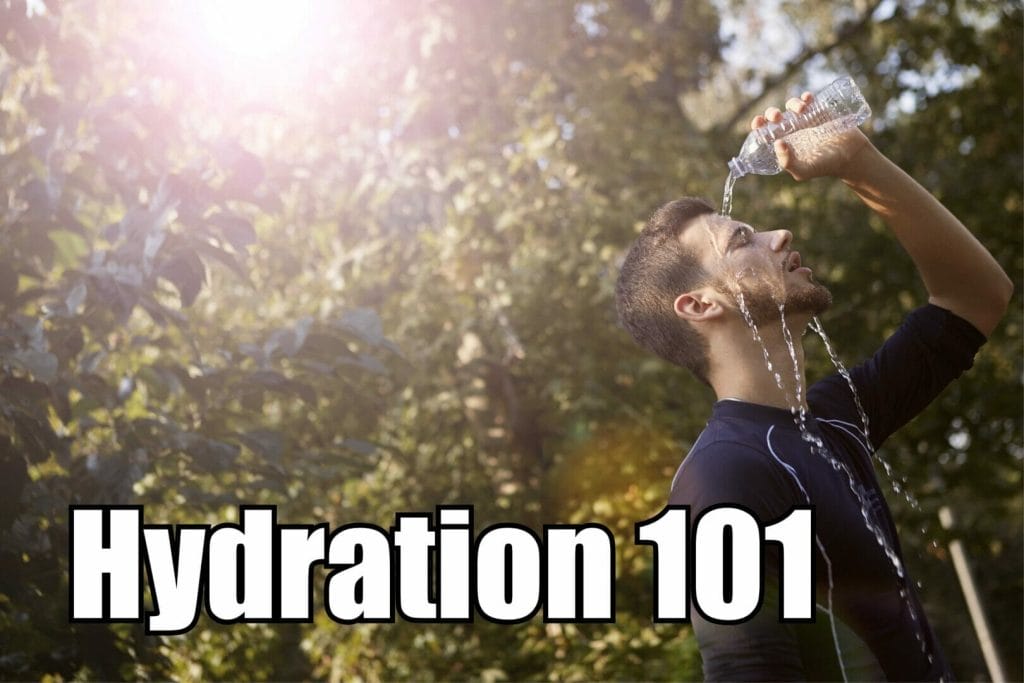Achieving fitness goals involves more than just workouts and nutrition. One key factor often overlooked is hydration, which, along with maintaining a proper balance of electrolytes, is essential for weight loss, muscle growth, and overall health improvement.
Hydration: More Than Just Water
Water is vital for nearly all bodily functions. It aids in digestion, nutrient absorption, and temperature regulation, and is essential for brain function and heart health. Moreover, water serves a crucial role in fitness, lubricating joints, transporting nutrients to muscles, and ensuring peak performance during workouts.
But hydration isn’t just about water. It’s also about electrolytes—minerals like sodium, potassium, calcium, and magnesium. Electrolytes help maintain the body’s fluid balance, muscle contractions, and neural activity.
How Much Should You Drink and Why Electrolytes Matter?
The traditional advice is to drink eight 8-ounce glasses of water a day (about 2 liters). However, individual needs can vary based on factors like age, weight, activity level, and climate. Active individuals or those in hot climates will likely need more.
When you sweat, you lose not only water but also electrolytes. This is why hydrating with water alone, especially during intense workouts or in high heat, might not be enough. Including electrolyte-rich foods like bananas, avocados, and spinach in your diet, or using electrolyte-infused sports drinks in moderation, can help replenish these essential minerals.
- Mineral Drops or Tablets: You can purchase mineral drops or tablets that are designed to be added to water. Follow the instructions on the packaging to determine how much to use.
- Add a pinch of Sea Salt or Pink Himalayan Salt: These salts contain a variety of trace minerals. Just a pinch in your water can help add minerals and improve taste. However, be cautious not to overdo it to avoid high sodium intake.
- Add Fresh Lemon or Lime: While the mineral content isn’t as high as sea salt, adding fresh lemon or lime to your water can provide some minerals and enhance flavor.
- Use a Mineral Water Filter: Some water filters not only purify water but also add minerals back into the water. Make sure to research and choose a product that suits your needs.
- Consume Mineral Water: You can buy mineral water, which naturally contains a range of minerals.
- Eat a Mineral-Rich Diet: While not a way to add minerals directly to water, consuming a diet rich in mineral-containing foods (like fruits, vegetables, whole grains, nuts, seeds) will contribute to your overall mineral intake, complementing the hydration process.
Remember, if you are generally healthy and eat a balanced diet, you likely do not need to worry about adding extra minerals to your water. However, during periods of intense physical activity or sweating, a higher intake of electrolytes can be beneficial.
Different Types of Water
Yes, as crazy as it might sound, there is such thing as different types of water. Here’s a closer look at some of the more common types you may come across:
- Tap Water: This is the water that comes directly from your home faucets. It’s sourced from local water supplies and is treated to remove harmful substances and meet safe drinking standards. The quality and taste of tap water can vary widely depending on your location. Additional filtration may be beneficial with tap water, since safe drinking standards vary depending on who you ask.
- Mineral Water: Sourced from underground reservoirs and springs, mineral water naturally contains a variety of minerals like calcium, potassium, and magnesium. The exact mineral composition can vary depending on the source. The minerals can contribute to your overall nutrient intake and may offer a unique flavor.
- Spring or Artesian Water: This type of water is sourced from a natural spring or artesian well. It may contain various minerals, similar to mineral water. The key difference is that while mineral water must contain a certain amount of minerals, there’s no such requirement for spring or artesian water.
- Purified Water: This is water that has undergone treatment to remove most impurities. The purification process, which can include reverse osmosis, distillation, or deionization, removes contaminants and minerals, providing you with pure H2O. It’s helpful to add in a bit of electrolytes when consuming large amounts of purified water, especially if you’re sweating a lot.
- Alkaline Water: Alkaline water has a pH level above 7, making it less acidic than regular tap water. Water can be alkaline by nature (mineral waters naturally are alkaline from the minerals) or they can become alkaline through ionization which charges the water with negative ions.
- Mineralized alkaline water has shown to be beneficial in aiding bone health, digestion, and reducing high blood pressure.
- There is no substantial research proving any benefits of drinking ionized alkaline water.
- Remineralized Water: After water is purified, some companies add minerals back into the water—thus creating remineralized water. The goal is to combine the purity of the treatment process with the potential health benefits and taste of mineral water.
- Distilled Water: This type of water is boiled to become steam, and then cooled to return it to a liquid form, effectively removing most impurities and minerals. The result is very pure water, but it lacks the minerals that are present in other types of water.
Practical Tips for Staying Hydrated
- Drink Regularly: Don’t wait until you’re thirsty to drink water. Thirst is a sign that your body is already dehydrated. Instead, aim to sip water consistently throughout the day.
- Eat Hydrating Foods: Many fruits and vegetables, like cucumbers, watermelons, oranges, and strawberries, have high water content. Including them in your diet can contribute to your hydration.
- Carry a Water Bottle: Keep a water bottle with you at all times – at your desk, in your car, or in your bag. Opting for a reusable bottle is not only environmentally friendly but also acts as a visual reminder to drink.
- Flavor Your Water: If you find water bland, try adding natural flavors. You can infuse your water with fruits like lemon, lime, or berries, or even add cucumber or mint for a refreshing twist.
- Hydrate After Exercise: If you’ve just had a workout, you’ve probably lost a significant amount of water through sweat. Make sure to replenish those lost fluids by drinking water after your workout.
- Drink Herbal Tea: Unsweetened herbal teas can be a great way to hydrate and warm up during colder months.
- Limit Diuretics: Drinks like coffee and alcohol can dehydrate your body. If you do consume these beverages, try to balance them with an equal amount of water.
Remember, every person’s hydration needs can vary depending on factors like body weight, activity level, and climate. It’s important to listen to your body and adjust as needed.



